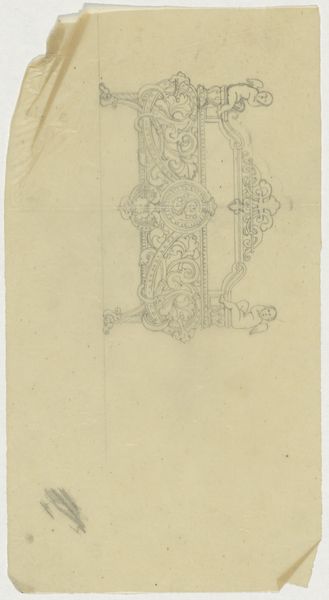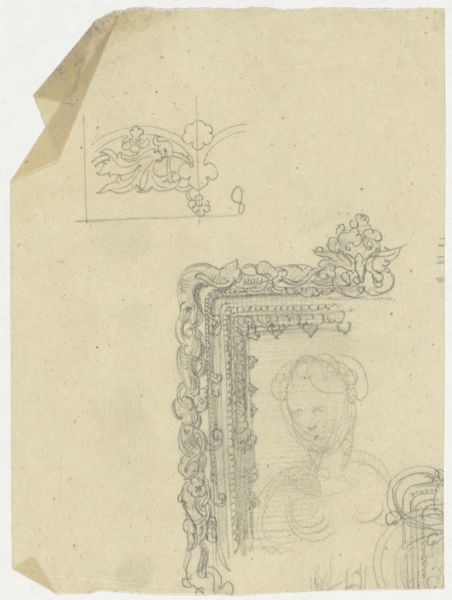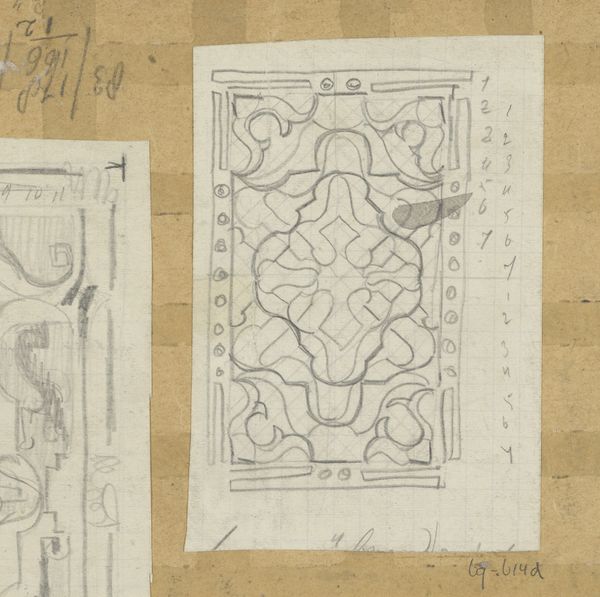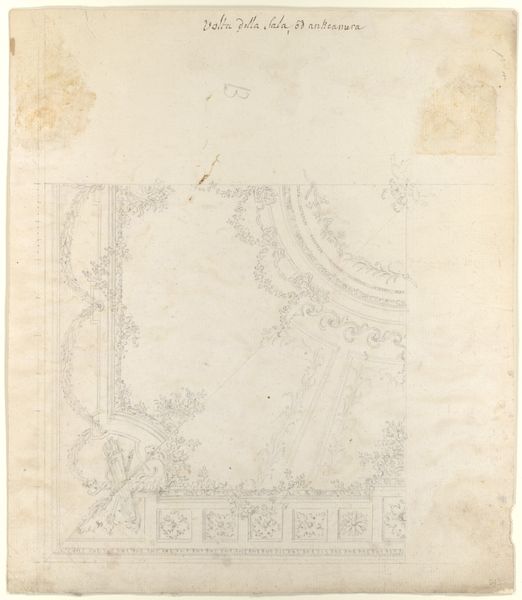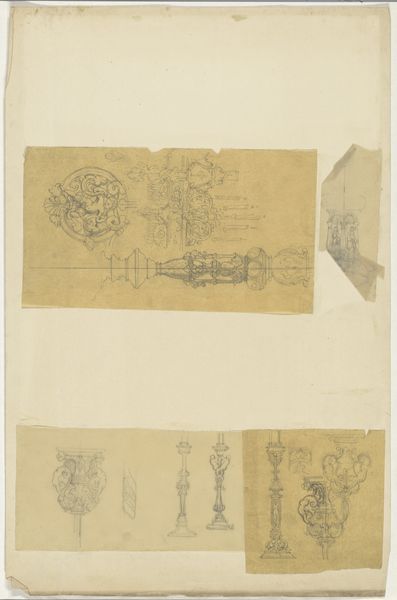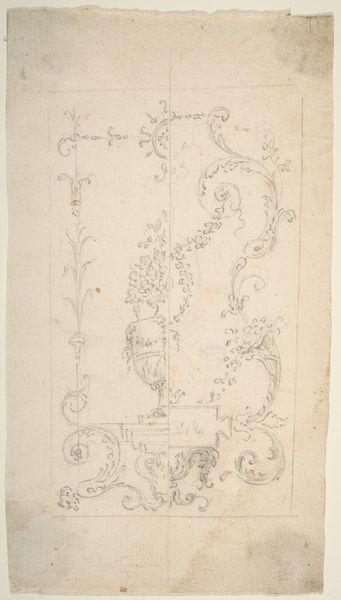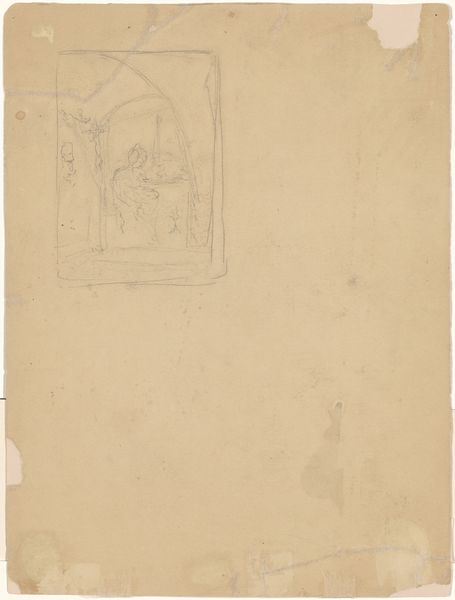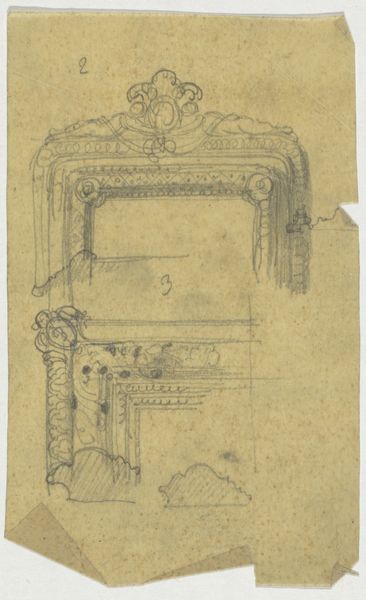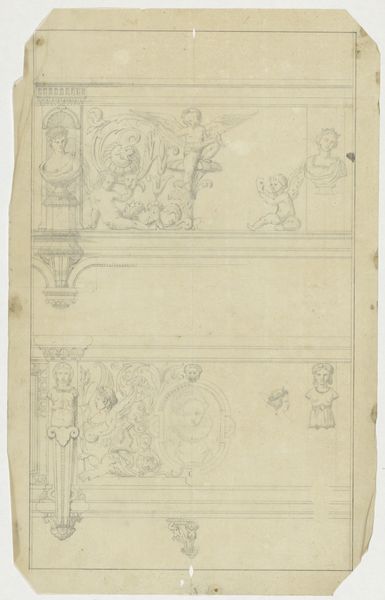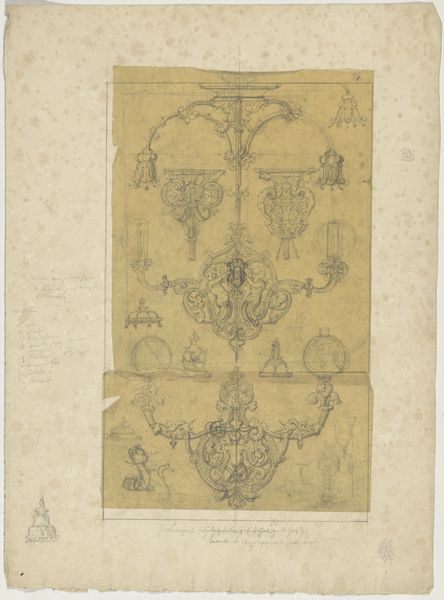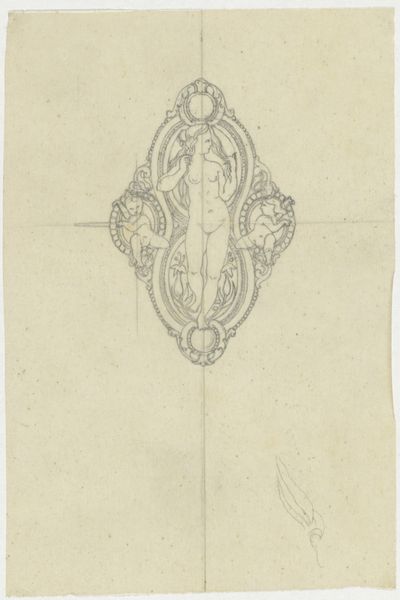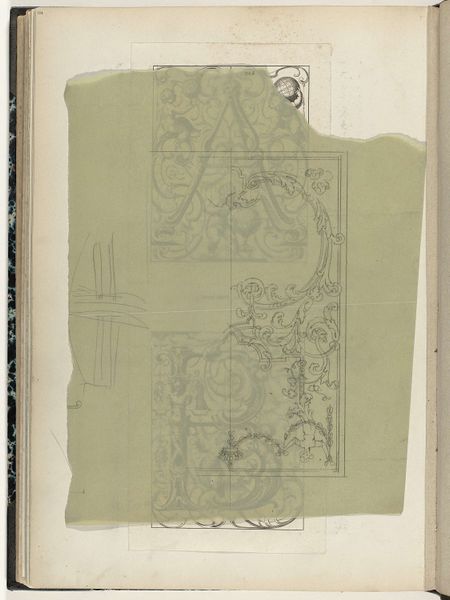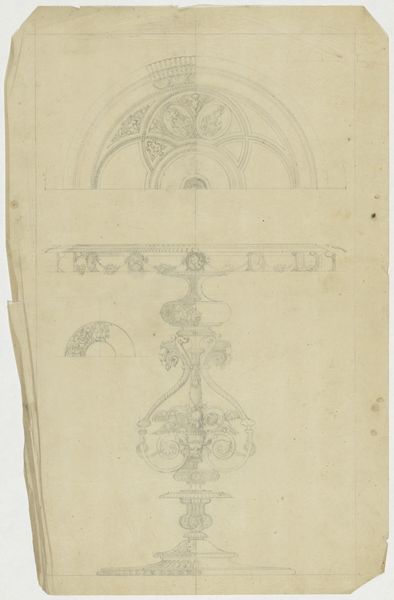
drawing, ornament, paper, pencil
#
drawing
#
ornament
#
paper
#
romanticism
#
pencil
#
academic-art
#
decorative-art
Dimensions: height 97 mm, width 132 mm
Copyright: Rijks Museum: Open Domain
Curator: Take a look at this work titled "Ornament," attributed to Firma Feuchère, and created sometime between 1830 and 1850. It’s a pencil drawing on paper. Editor: It feels like looking at a ghost. The lightness of the pencil, the bare paper, the sense of something delicate about to fade away... there's a poignant fragility. Curator: Precisely! The Romantic era grappled with mortality and fleeting beauty. The floral motifs intertwined here are classical symbols of life and growth, but rendered in such a tentative way, they acknowledge their inevitable decay. Editor: What strikes me is the artist's attention to the production itself. You see those faint grid lines and the preliminary sketches scattered across the page. It really reveals the work and process inherent in creating ornament of that period. The skill and refinement came at the cost of laborious preparation. Curator: Indeed. Feuchère's firma specialized in architectural ornaments and interior designs. This sketch encapsulates a prevalent style, and the motifs are redolent with cultural echoes of gardens, a tamed vision of nature as luxury object, all contained within those defined shapes. It represents social and cultural aspirations embedded in the Romantic era. Editor: And the act of drawing itself, using a pencil to capture what was essentially designed for production at scale. The soft marks, those traces of handiwork. They were essentially making designs meant to be forged in metal or cast in plaster or some other building material. The paper gives the design this whole other sensibility – vulnerable, tentative and delicate. Curator: That duality is intriguing. The design gestures toward permanence – embellishing grand buildings. But here it is caught mid-creation, sketched fleetingly on a fragile ground. It suggests the dream of permanence rather than its material reality. Editor: Yes, in an object about building and consumption of luxury. Yet we see a humble materiality of graphite and paper instead. Curator: A reminder that even grand illusions spring from the simplest origins. Editor: That shift in scale changes how we receive that ornamental detail – drawing closer the gap between high design and humble process.
Comments
No comments
Be the first to comment and join the conversation on the ultimate creative platform.
